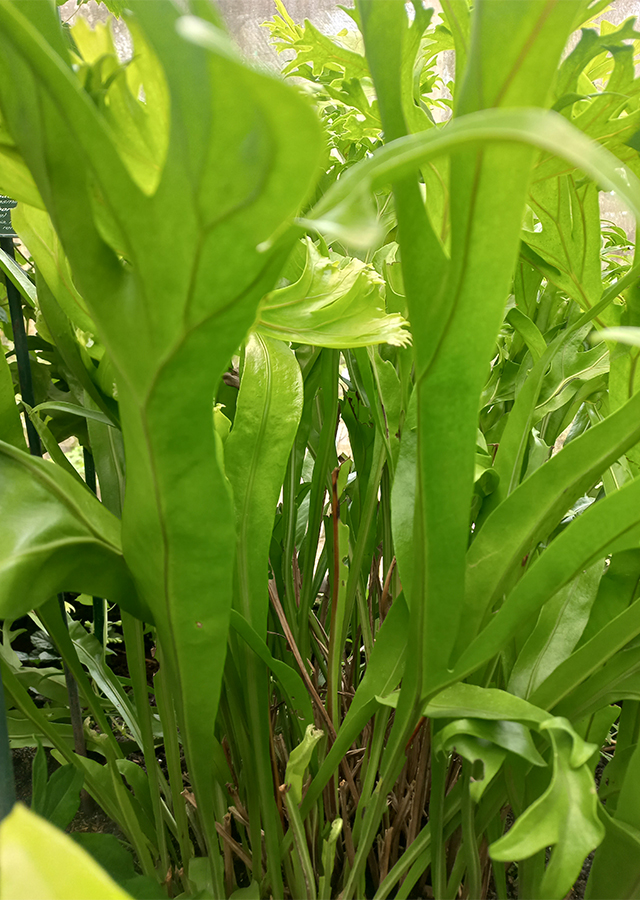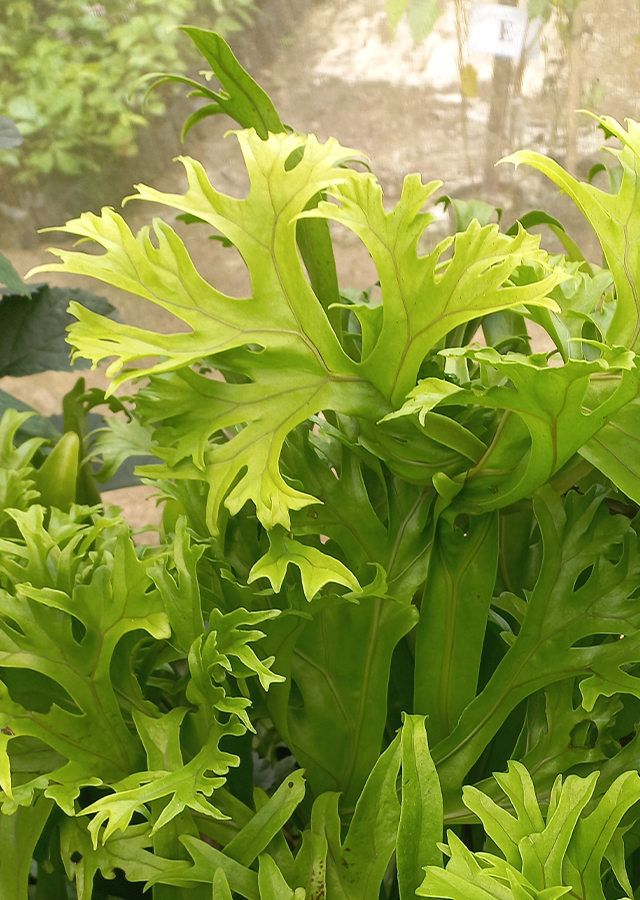Traditional Herbs from Microsorum punctatum
cough
- Take fresh leaves of fishtail fern, wash them thoroughly.
- Boil the leaves until boiling.
- Let it warm/cool.
- Strain and drink.
as_laxative
- Prepare fresh leaves of fishtail fern, wash them thoroughly.
- Blend them until smooth and become juice.
- Strain then drink.
What is Microsorum punctatum Looks like??



Parts of Microsorum punctatum that could be used
- Leaves
- Rhizomes
Microsorum punctatum Distribution
Microsorum punctatum or Fish Tail Fern is a plant from the Polypodiaceae family which is widespread in tropical and subtropical areas of the Old World from West Africa and India to Tahiti, north to South China and Southeast Asia, Northern Australia and the Pacific. This species has high potential as an ornamental and cut leaf plant, and has been cultivated on a large scale in the Philippines. This ornamental plant can be placed indoors or outdoors. In Dhemaji and Lakhimpur districts, M. punctatum is also used in making Apong (a type of rice beer). In religious rituals, this species also has value for society, being used to appease spirits. Apart from that, M. punctatum also has value as a medicinal plant. Traditionally used by the community as an ingredient in the treatment of various disease complaints, it is believed by the community to be able to cure coughs and wounds.Agroecology of Microsorum punctatum
M. punctatum usually grows as an epiphyte on tree trunks and branches, but can also be terrestrial in various types of forests (primary rainforest, secondary rainforest), inland cliffs, agricultural land, disturbed or open areas, sometimes in savannas but also in wet locations, most common in the lowlands but occurs up to an altitude of 2,800 m above sea level. M. punctatum is also often found growing on rocks near rivers in the forest. This species grows well in shady areas (partially shaded or fully shaded), but can tolerate conditions in full sun. Its growth also likes areas with good humidity or humidity levels, but is able to tolerate (short) periods of drought in the root zone.
Morphology of Microsorum punctatum
- Rhizome rapidly creeping, erect, short, thick, waxy white, without circumvascular sheath, about 8 mm in diameter. Densely scaly at apex, pseudopeltate, ovate to triangular.
- Leaves simple, subcoriaceous, rough surface, colored light-pale green, narrowly oval to lanceolate, leaves up to 1.6 m long with a width of about 15 cm, slightly fleshy. The base curves into a wing along the petiole, margin leaves flat to wavy or irregularly lobed, tip (top) of the leaf rounded to pointed (acuminate), branched in various segments at the top resembling a fish tail, central rib raised on both leaf surfaces, light green others are rather faint or indistinct. Fertile leaves are not found.
- Sori are small and round, numerous, irregularly distributed on the lower surface of the midrib, measuring 0.2 cm long, bilateral, hyaline or yellowish, smooth exine.
Cultivation of Microsorum punctatum
- Propagation of plants through spores, rhizome cuttings, and breaking or dividing seedlings.
- Rhizome cuttings should be planted no deeper than 5 cm.
- The spores are sown on a sterilized medium and stored in very high relative humidity. The sporophyte is transplanted in groups when they are about 1 cm high and transplanted again individually when they are more than 3 cm high. In the Philippines, M. punctatum spores germinate about 6-7 weeks after planting and sporophyte formation begins after 7 weeks.
Microsorum punctatum, more details :
Chemical Content of Microsorum punctatumAlkaloids, flavonoids, terpenes, phenols, polyphenols, sterols, anthraquinones, phenolics, saponins, terpenoids, formic acid and oxalic acid.
Benefits of Microsorum punctatum
Treats coughs, heals wounds, reduces fever, acts as a laxative and diuretic. Has antimicrobial and anti-inflammatory activity.
Simplisia of Microsorum punctatum
Another Facts for Microsorum punctatum :
Synonym of Microsorum punctatumPhymatodes linguata (Sw.) C.Presl, Pleopeltis punctata (L.) Bedd., Polypodium punctatum (L.) Sw.
Habitus of Microsorum punctatum
Fern. Ferns, epiphytes or lithophytes, annual (perennial), capable of growing to a height of 60 - 80 cm and a width of 20 - 30 cm
Habitat of Microsorum punctatum
- Forest
No comments:
Post a Comment